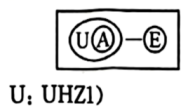Two powerful NASA telescopes have detected the oldest and most distant black hole ever found. Data collected via energetic X-rays by the Chandra X-ray Observatory and James Webb Space Telescope has helped astronomers spot the signature of a growing black hole within the early universe just 470 million years after the big bang, which occurred
13. 8 billion years ago. The discovery, described in a study published in Nature Astronomy, may help astronomers figure out how some of the first supermassive black holes formed in the universe.
"We needed Webb to find this remarkably distant galaxy (星系) and Chandra to find its supermassive black hole, " said lead study author Akos Bogdan, in a statement. "We also took advantage of a cosmic magnifying glass (宇宙放大镜) that boosted the amount of light we detected. " He was referring to an effect called gravitational lensing (引力透镜效应), which occurs when closer objects act like a magnifying glass for distant objects. Gravity essentially twists and strengthens the light of distant galaxies in the background of whatever is doing the magnifying, enabling observations of otherwise invisible features.
Astronomers detected the black hole in a galaxy called UHZ
1. At first glance, the galaxy appeared in the same direction as a cluster of galaxies known as Abell 2744, which is located about
3. 5 billion light-years from Earth. But data collected by the Webb telescope showed that UHZl is actually much farther away and located beyond the cluster at
13. 2 billion light-years from Earth.
The team used the Chandra Observatory to detect superheated gas releasing X-rays within UHZ1, the obvious sign of a supermassive black hole growing in size. The detection was made possible by the Abell cluster of galaxies, which intensified the light of the UHZ1 galaxy and the X-rays released by the black hole by a factor of four.
Astronomers think the discovery will help them better understand how supermassive black holes appeared and reached their huge masses so soon after the beginning of the universe.
 B .
B .  C .
C .  D .
D . 